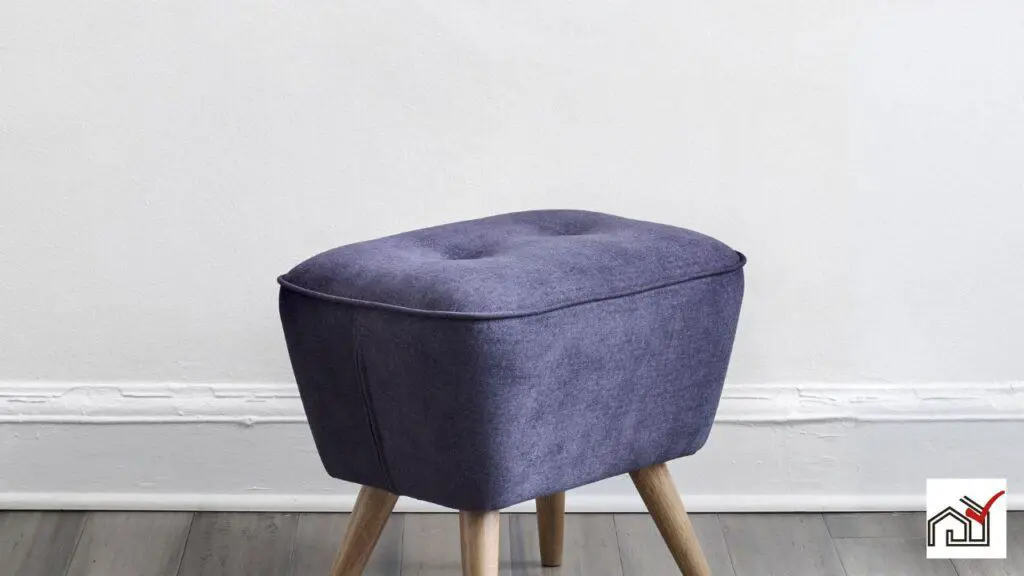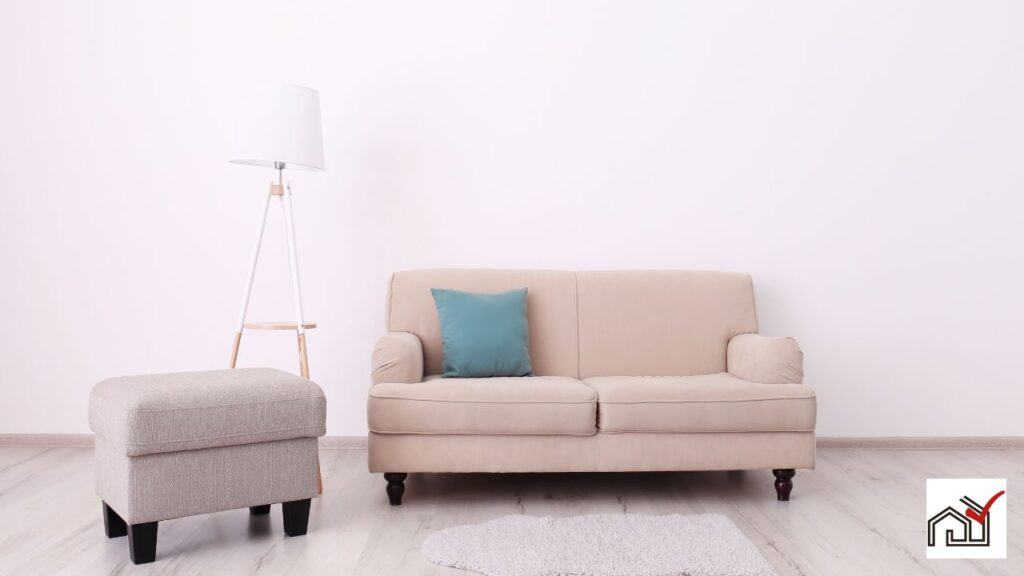When considering an ottoman as an addition to your living room, you might think it needs to be identical to the furniture you already own.
But does an ottoman have to match your couch?
Matching Ottoman and Couch
An ottoman and a couch don’t have to match perfectly. In fact, you can make a great decor statement if you go with a complementary color, texture, or pattern on your ottoman. Just keep in mind the general style of your decor and pick something that falls within its lines.
Read on to know how to style your ottoman with your couch to get the best aesthetic results possible!
Does an Ottoman Have to Match the Rest of The Furniture?
Ottomans are such versatile pieces of furniture.
But aside from functionality, they make for fantastic decor pieces if given a chance.
While you can get an ottoman that perfectly matches your couch, loveseat, or armchair, you can also play around a little with its elements for a more exciting look.
Now, that doesn’t necessarily mean you should pair a mid-century modern ottoman with a classic Queen Anne couch.
However, the styles you can mix and match are endless, so let’s go over them!
How to Mix and Match an Ottoman with A Couch?
If you can’t find an ottoman to perfectly match your furniture or just think a beige couch with a beige ottoman is too bland, we’ve got great news for you!
There are a bunch of styling tricks that can make your ottoman and couch pairing look intentional and gorgeous, such as:
1. Pairing Different Solid Colors
This is an easy way out of trying to closely match a newly purchased ottoman with an old couch or vice versa.
Just look for another solid color that will serve the aesthetic vibe you’re looking for!
Here are a few options:
A) Lighter or Darker Shades of The Same Color
Different shades of the same color are a classic trick to tie a room together without frantically testing your Pantone cards for an exact match.
This always looks beautiful, elegant, and easy on the eye.
If you have a charcoal gray couch, you can go for a lighter gray ottoman.
This will still look cohesive, put together, and have a similar effect to a couch and ottoman that match to a T.
B) Complementary Colors
This is a basic design concept used in decor; a quick look at the color wheel will let you know what the complementary color to your couch is, and based on it, you can pick the color of your ottoman. It’s that simple!
This choice is bolder and less traditional than the previous one.
However, complementary colors usually make sense to us and don’t cause a lot of dissonances.
So, using them as color pairings won’t look too odd.
A classic complementary color example is yellow with purple, but you can also try muted shades of red and green to achieve the same result.
C) Monochrome + Pop of Color
If you already have a black or white couch, you’re halfway there! Pairing a colorful ottoman with your couch will liven up your space and give it a lot more visual intrigue.
Now, this pop of color doesn’t have to be neon orange.
You can still get the same effect if you go for something more subdued, like a jewel-toned ottoman with your black couch or a pastel shade with your white couch. It still adds color to the monochrome mix.
2. Pairing a Patterned Piece with A Solid One

Patterns are a great way to work around the matching issue because you can easily match the solid piece with one of the colors in the pattern.
This yields a very harmonious yet exciting final product.
If you don’t enjoy large patterns, many ottomans with small prints are available, and they would look amazing with a solid-colored couch.
And for those with the opposite problem, where you have a patterned couch you’re trying to match, have no fear!
Just look for the dominant color in the pattern and get an ottoman in that color.
3. Pairing Different Textures
Ottomans can come in many fabrics and materials, like leather, suede, velvet, knitted wool, jute, cotton, or linen.
You can use this to your advantage, pairing different textures together to create a more exciting presentation.
If you have a leather couch, pair it with a suede ottoman of the same color or a close shade.
And with a more summery, linen-covered couch, try an ottoman with a solid or printed cotton fabric.
This will make your living room feel coordinated but not monotonous and boring.
What to Consider when Mixing and Matching an Ottoman with A Couch?
Now that we’ve tackled how to pick out a nice ottoman to go with your couch, let’s talk about the things that can make or break the pairing.
1. Furniture Styles
When picking out an ottoman for your couch, the first thing to consider is the style of your pre-existing furniture.
Pieces that go super well together are usually those that follow the same aesthetic principles.
For example, traditional couches with Queen Anne legs will go perfectly with a pouf-style ottoman or one with the same style of ornate, carved legs.
However, pairing a couch like that with a mid-century, straight-legged ottoman will look pretty out of place!
The same goes for fabric choices. If your couch is made of velvety fabric, a leather ottoman will clash with it.
It’s better to go with a texture that works with the rest of the components in the room.
That said, don’t be afraid of switching things up when it comes to shapes.
You can have a square couch and armchair but still go for a round ottoman to soften things a bit.
2. Height
This one is pretty important from a functional standpoint.
An ottoman is mainly used as extra seating, a footstool, a storage unit, or a coffee table.
Getting an ottoman that stands taller than your couch will probably cause a lot of trouble in all of these cases.
Aside from being a terrible footrest, the ottoman will also look like it doesn’t belong in the room.
So, to avoid that problem, we suggest you measure the height of your couch, seat to floor.
And if you have a softer couch, you should also measure that height when someone is sitting on the couch.
That way, you’ll avoid buying an ottoman that’s too tall to serve its purpose.
It will also help you avoid buying an expensive ottoman.
3. Size
In this particular instance, size does matter! An ottoman should always be of the same scale as your couch and other furniture.
Using a huge ottoman with your space-saving furniture will look pretty odd to anyone looking.
The same goes for a tiny pouf used with a giant sectional.
You don’t want the ottoman you picked to look like children’s furniture against your other pieces.
Even if the color of the ottoman matches the couch perfectly, it will probably look like a poor pairing compared to a differently-colored ottoman of the appropriate size.
That’s why you should always double-check dimensions, especially if you make an online purchase.




